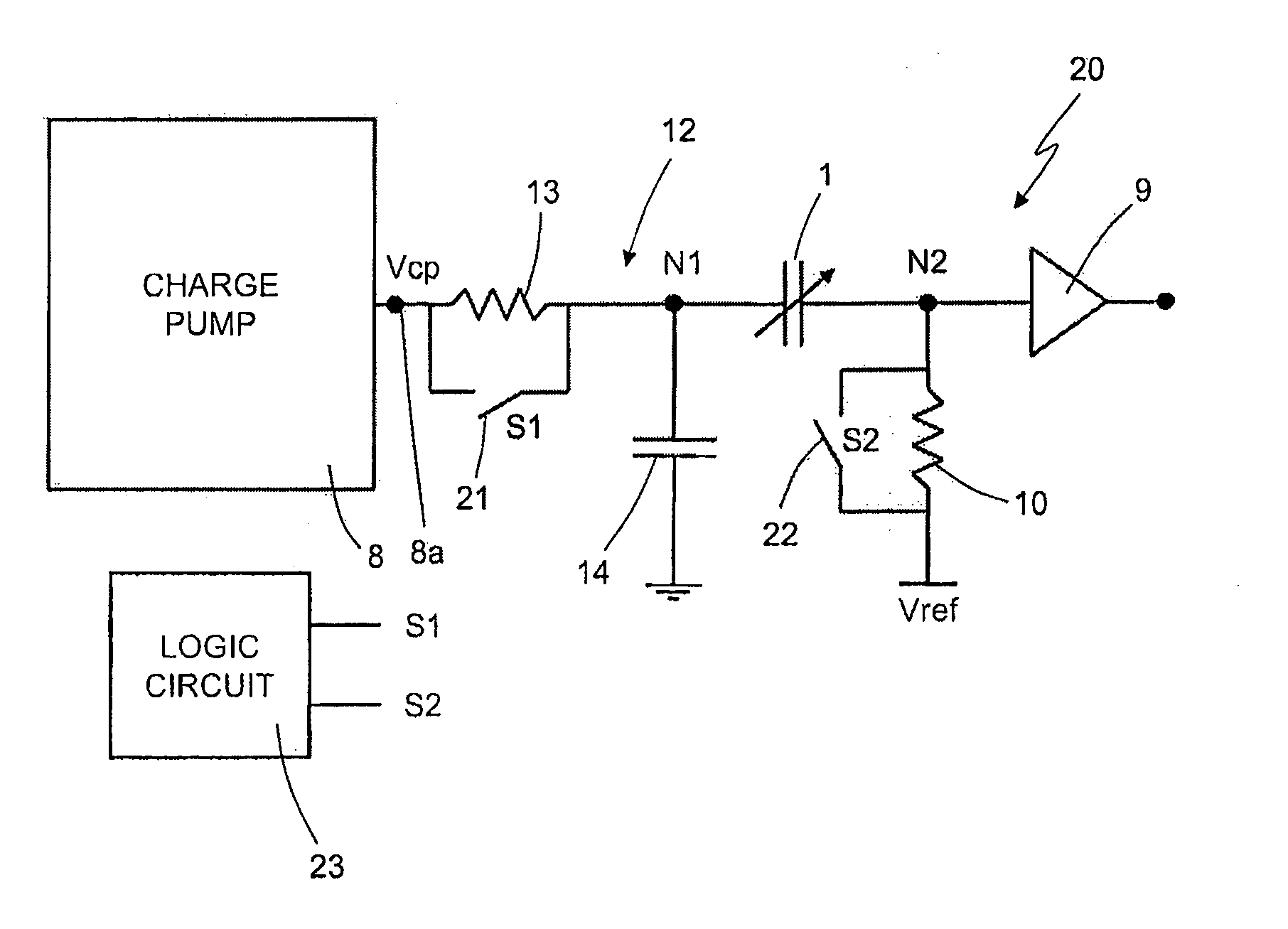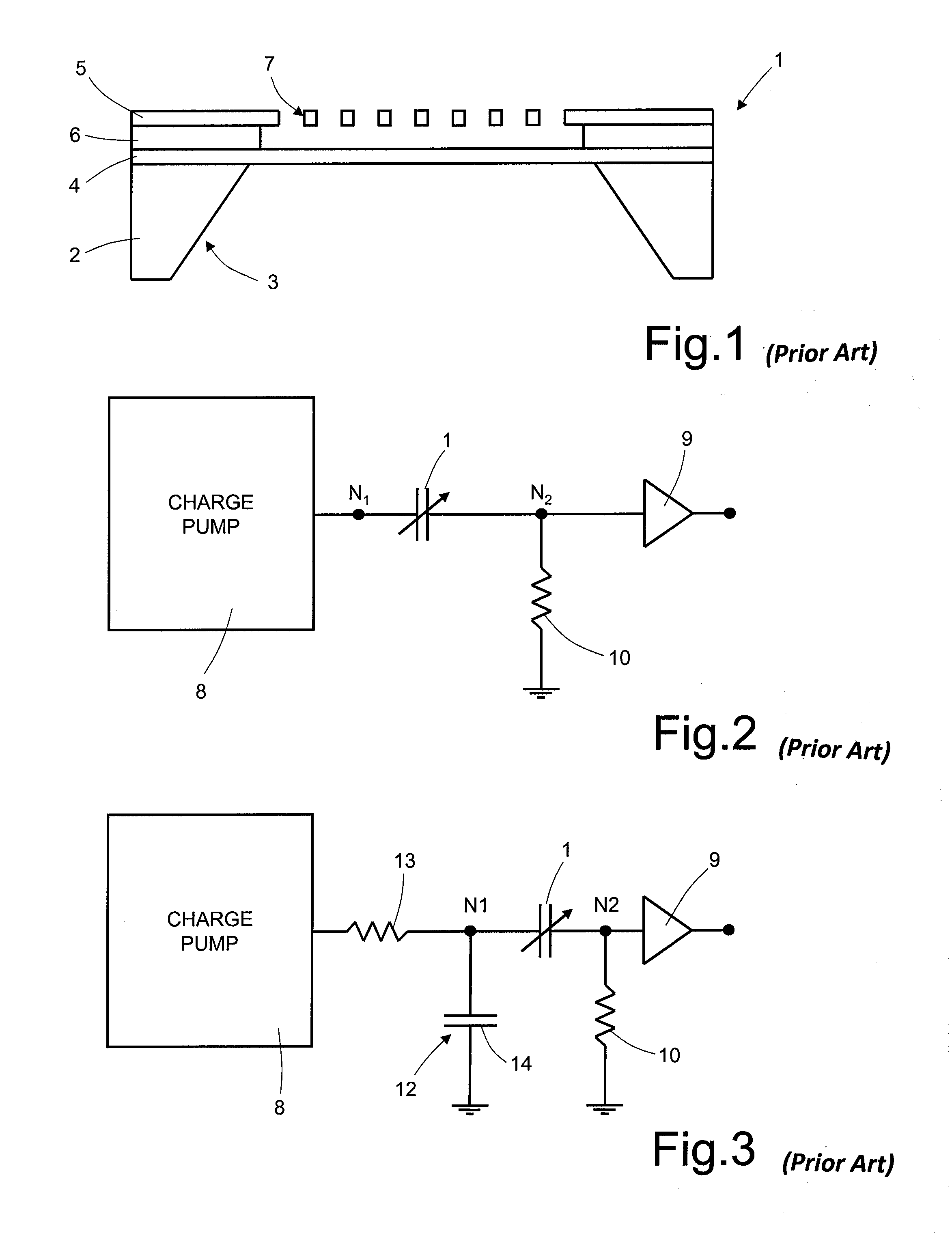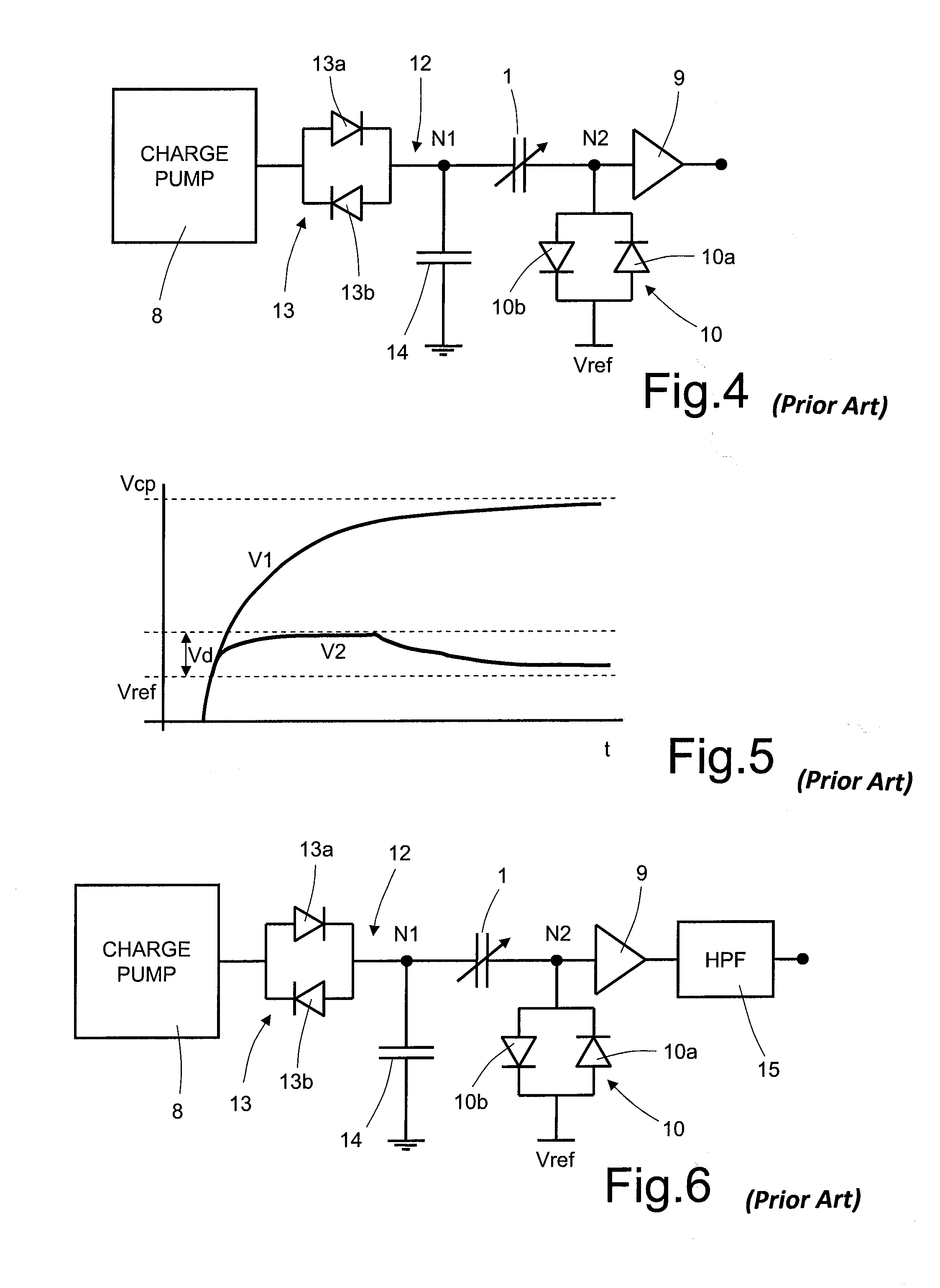Biasing circuit for a microelectromechanical acoustic transducer and related biasing method
a biasing circuit and microelectromechanical technology, applied in the direction of amplifiers, instruments, electric variable regulation, etc., can solve the problems of long start-up time, reduced signal-to-noise ratio, and easy shortening of the settling time of such a configuration,
- Summary
- Abstract
- Description
- Claims
- Application Information
AI Technical Summary
Problems solved by technology
Method used
Image
Examples
Embodiment Construction
[0034]As will be clarified hereinafter, one aspect of the present disclosure envisages introduction, for the biasing circuit of an acoustic transducer, in particular a MEMS microphone of a capacitive type, of an operating state during a start-up step (occurring upon turning-on or return from a power-down condition), in which one or both of the terminals of the MEMS microphone are brought directly to desired biasing voltages so as to enable a rapid settling of the voltages of the same terminals (and an initialization of a filtering stage coupled to the acoustic transducer). At the end of the start-up step (which can consequently be much faster than in traditional solutions), one or both of the terminals of the MEMS microphone are connected to a high impedance, whether it is associated to a filter resistor or to the input of a corresponding reading amplifier stage.
[0035]In particular, as illustrated in FIG. 7 (where elements that are similar to others already described are designated ...
PUM
 Login to View More
Login to View More Abstract
Description
Claims
Application Information
 Login to View More
Login to View More - R&D
- Intellectual Property
- Life Sciences
- Materials
- Tech Scout
- Unparalleled Data Quality
- Higher Quality Content
- 60% Fewer Hallucinations
Browse by: Latest US Patents, China's latest patents, Technical Efficacy Thesaurus, Application Domain, Technology Topic, Popular Technical Reports.
© 2025 PatSnap. All rights reserved.Legal|Privacy policy|Modern Slavery Act Transparency Statement|Sitemap|About US| Contact US: help@patsnap.com



